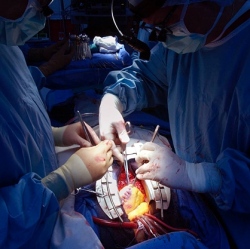
A fast, efficient way to turn cells extracted from routine liposuction into liver cells — a feat with huge potential for regenerative medicine — has been developed by Stanford University School of Medicine scientists
The scientists performed their experiments in mice, but the adipose (fat) stem cells they used came from human liposuction and actually became human, liver-like cells that flourished inside the mice’s bodies.
This method is distinct from those producing liver cells from embryonic stem cells or induced pluripotent stem cells (iPS). Although embryonic and iPS stem cells are pluripotent — they can, in principle, differentiate into every cell type — they carry a palpable risk of forming tumors.
However, the cells produced using this new technique, which involves no intermediate pluripotent phase, show no signs of being tumorogenic (creating tumors).
All aspects of the new fat-to-liver technique are adaptable for human use, said Gary Peltz, MD, PhD, Stanford professor of anesthesia and the study’s senior author. Creating iPS cells requires introducing foreign and potentially carcinogenic genes. But adipose stem cells merely have to be harvested from fat tissue.
